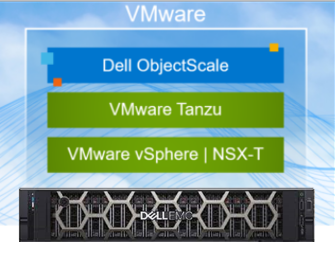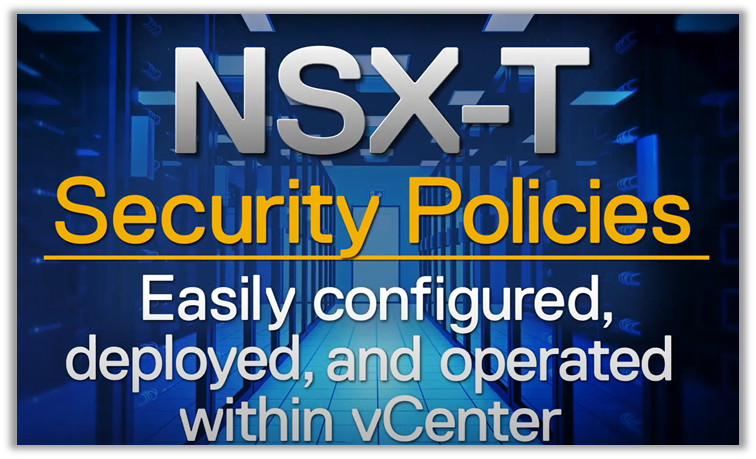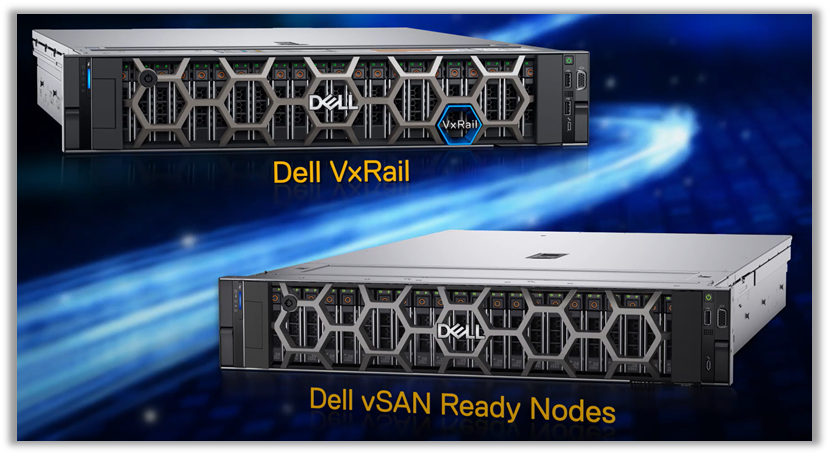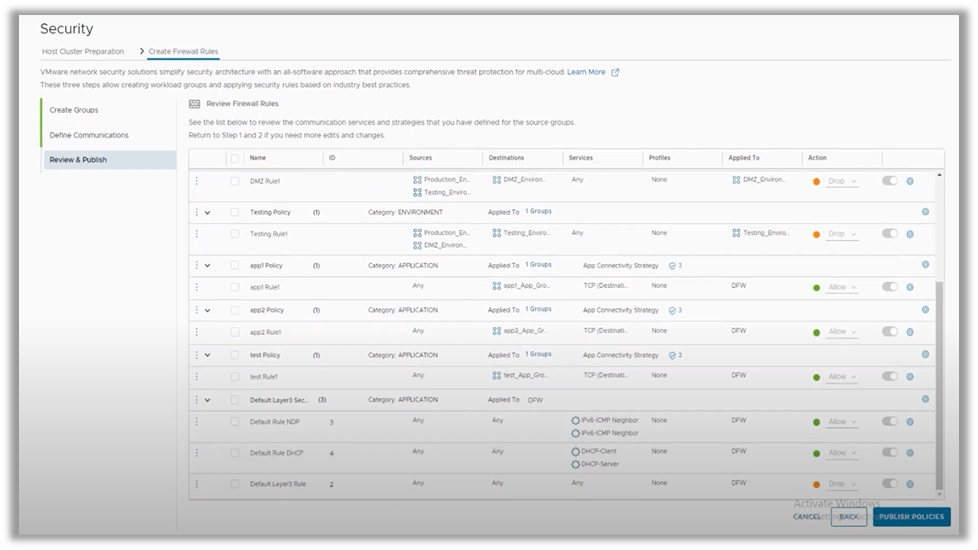

Dell vSAN Ready Nodes with Dell ObjectScale to Run Your Modern Applications
Thu, 07 Jul 2022 14:52:56 -0000
|Read Time: 0 minutes
In my previous blogs, the focus has been on highlighting the value that Dell vSAN Ready Nodes incorporate in a standardized market segment. These value additions include the variety of form factors available, the existence of 13 models with Identity modules, and the special benefits that the integration with Open Manage Enterprise provides.
But, what about the workloads? One key factor to decide for an infrastructure choice is the benefits and advantages it may have for the type of workloads the business requires. Today, the ability to run effectively and incorporate enterprise features such as protection or replication determine the choice of platform that customers make.
In a world where cloud native applications (CNA) are the natural choice for new deployments, it is relevant to describe how Dell vSAN Ready Nodes behave is such scenarios.
Speaking about paradigms, CNA is to application development like unstructured data is to storage. The relevance of object storage, and the growth that it experiments every year, is substantial.
Wouldn’t it be great to put all these together under the Dell vSAN Ready Node hood?
There is a great VMware platform to simplify your DevOps experience by adding Kubernetes to your infrastructure, making it ready to run modern applications and minimize operational complexity. VMware Tanzu provides a self-service, consistent Kubernetes experience for developers to maximize their productivity, and security and data protection policies and features, out-of-the-box.

vSphere with Tanzu supervisor cluster architecture
A cluster that is enabled for vSphere with Tanzu is called a Supervisor Cluster. It runs on top of an SDDC layer that consists of ESXi for compute, NSX-T Data Center or vSphere networking, and vSAN, like in a Dell vSAN Ready Node. vSAN shared storage is used for persistent volumes for vSphere Pods, VMs running inside the Supervisor Cluster, and pods in a Tanzu Kubernetes cluster.
Dell ObjectScale, based on the Dell ECS platform, delivers a new, software-defined, microservices-based architecture using Kubernetes to provide enterprise-class object storage for modern, cloud-native applications in VMware environments.

Dell ObjectScale deployment option for VMware environments (Dell vSAN Ready Nodes)
Dell ObjectScale integration with VMware vSphere with Tanzu and the vSAN Data Persistence platform enable supporting cloud-native applications on Dell vSAN Ready Nodes. It also enables a global management platform for the distributed storage infrastructure under a single namespace with universal content access.
The components for the solution are:
- VMware Cloud Foundation with Tanzu
- NSX-T
- vSAN (in this example, Dell PowerEdge R650 vSAN Ready Nodes)
- vSAN Data Persistence platform
The solution is built upon four Dell PowerEdge R650 vSAN Ready Nodes configured in a vSAN cluster. This includes three VMware NSX-T manager nodes and three edge nodes for redundancy and high-availability. VMware NSX-T manager nodes were installed on the same vSAN cluster to conserve resources in a lab environment. In a production environment, NSX-T manager nodes can also be installed on an external cluster to provide management and data-plane separation and availability.
This architecture integrates Dell ObjectScale with VMware vSphere with Tanzu through vSAN Data Persistence platform enabling customers to deploy software-defined object storage (stateful services). It also makes containers as easy to manage as VMs. IT departments can deploy cloud-native web and mobile applications, dev/test environments, and AI/ML and analytics platforms over the same infrastructure that host their legacy VMs.
There are different deployment options available:
- Fully sharing the vSAN Ready Nodes clusters between ObjectScale data services and the workloads to be run
- Creating separate clusters in the vSAN Ready Node farm for ObjectScale data service and the workloads to be run
If you want to learn more about how Dell vSAN Ready Nodes can be built to host cloud-native workloads, see the VMware white paper Dell ObjectScale on VMware vSphere with Tanzu.
References
- White paper: Dell ObjectScale on VMware vSphere with Tanzu
- Dell ObjectScale
- Dell vSAN Ready Nodes Info Hub
- Blog: Running Dell ObjectScale on VMware vSphere with Tanzu
Author: Inigo Olcoz, Twitter: @virtualOlcoz
Related Blog Posts

Introducing ObjectScale 1.4.0: Elevating Enterprise Object Storage
Wed, 17 Apr 2024 14:00:00 -0000
|Read Time: 0 minutes
Dell Technologies is excited to unveil the latest iteration of its object storage solution, Dell ObjectScale 1.4.0. Engineered to cater to the rigorous requirements of enterprise-level storage, Dell ObjectScale 1.4.0 boasts a software-defined and containerized architecture. This advanced design ensures exceptional reliability, performance, and scalability, further solidifying Dell Technologies' dedication to delivering superior storage solutions.
Dell ObjectScale offers diverse deployment options that cater to a plethora of infrastructural needs, providing flexibility and efficiency in management and scaling enterprise object storage.
New features in Dell ObjectScale 1.4.0
Dell ObjectScale 1.4.0 introduces a host of new features and enhancements aimed at improving serviceability, security, and manageability:
Monitoring and reporting enhancements
The enhanced management API offers comprehensive monitoring capabilities, allowing for better visibility into cluster status, node-based inventory details, and component health. Additionally, new audit messages for cluster user set password events and new alerts for successful and failed jobs have been introduced. Users can now access various functions through the ObjectScale portal or a REST client, enhancing serviceability and oversight. This enhancement benefits administrators by enabling proactive maintenance and troubleshooting and ensuring optimal performance.
Dell ObjectScale portal improvements
The portal now provides a complete inventory of all nodes, disks, pods, and PVCs, coupled with enhanced Grafana UI dashboards for in-depth data visualization and performance monitoring. This improvement aids in efficient resource management and planning, allowing administrators to make informed decisions and optimize cluster performance.
S3 bucket deletion
A new API facilitates the deletion of buckets containing data, streamlining the process and offering better monitoring capabilities. Previously, a standard S3 bucket could only be deleted if it was empty. The new feature allows for the deletion of non-empty buckets through a background task with configurable speed and resource consumption. This feature is particularly beneficial for use cases requiring frequent updates or deletions of stored data as it simplifies operations and enhances flexibility.
ObjectScale replication – improved performance
Enhancements to the replication framework deliver improved throughput for both small and large objects. These enhancements mitigate the growth of replication backlogs and optimize resource utilization, thereby ensuring data protection without adversely affecting customer applications.
Upgrade and installation enhancements
The refined deployment and installation process, including a reduced package size and streamlined upgrade process, improves the customer experience. The appliance and software bundle deployments provide a 1-click upgrade feature for the application layer, simplifying upgrades and reducing operational complexity and downtime.
ObjectScale ‘As An Application’ improvements
Version 1.4 provides management IAM support for deployments on Red Hat OpenShift, offering a simplified management user experience and a common IAM model across all ObjectScale deployment models. This enhancement is beneficial for organizations using OpenShift as it provides consistent and simplified management across different deployment environments.
Storage reclamation process improvements
The garbage collection (GC) process reclaims space from discarded full chunks or chunks containing a mixture of deleted and non-deleted object fragments no longer referenced. Enhancements to the GC process and verification scanner improve the efficiency of the storage reclamation process. This benefit is crucial for long-term data retention and storage optimization as it ensures efficient use of storage resources and reduces costs.
Security: cipher security update
ObjectScale has upgraded its cryptographic module to BSAFE Crypto-J 6.3, ensuring FIPS 140-2 compliance for Data-at-Rest Encryption. This enhancement is essential for maintaining stringent security measures, providing robust encryption and enhancing data protection.
Platform latest version support
Dell ObjectScale 1.4 now supports the latest versions of Red Hat OpenShift (4.14) and Kubernetes (v1.27), allowing for platform upgrades to the most current releases. This benefit ensures compatibility with and access to the latest features and improvements, enhancing overall system performance and security.
Conclusion
Dell ObjectScale 1.4.0 offers a sophisticated, enterprise-grade object storage solution that is flexible, scalable, and secure. With its robust architecture and integration with Kubernetes, it provides a compelling option for organizations seeking to optimize their object storage infrastructure.
Author: Cris Banson

Simplifying Security Operations for Dell HCI Platforms with NSX
Thu, 08 Sep 2022 16:58:04 -0000
|Read Time: 0 minutes
Today, most technology companies in the IT space work to offer customers not only the best technology innovations but also those that help simplify their day-to-day lives.
One example of this is the new vCenter plug-in for NSX-T, introduced with vSphere 7.0 Update 3c and NSX-T 3.2. Through this new deployment method for NSX-T, management and operations users can now use NSX-T as a plug-in for vCenter, similar to how earlier versions of NSX were configured. Through wizard-assisted operations, security policies can easily be configured, deployed, and operated within vCenter.

Figure 1. The new vCenter plug-in for NSX-T simplifies security deployment and operations
For Dell HCI platforms such as VxRail, vSAN Ready Nodes, and PowerEdge servers hosting vSAN-based workloads, NSX becomes an optimal network and security engine.

Figure 2. Dell HCI platforms such as VxRail or vSAN Ready Nodes become the perfect targets for the new vCenter plug-in
The whole process is simple. It can be completed by following these steps:
- Install NSX-T Manager and provide a license key.
- Install the new method to configure and operate NSX security, the vCenter plugin for NSX.
- Configure the distributed firewall policies for the HCI cluster:
a. Define infrastructure services as needed (DNS, DHCP, custom…).
b. Create the environment to consume the defined infrastructure services. - Define how the elements in the environment can communicate with each other.
- Define communication strategies for applications in the environment.
- Review and verify the defined security policies before they are published and effective.

Figure 3. Defined NSX security rules can be reviewed before going live
If you want to learn more about how simple security operations can become with the new vCenter plug-in for NSX, take a look at this video.
Author: Inigo Olcoz
Twitter: VirtualOlcoz
References
- VxRail Info Hub
- vSAN Ready Nodes Info Hub
- HCI Security Simplified: Protecting Dell VxRail with VMware NSX Security
- Simplifying Security Deployment and Operations for Dell HCI Platforms
- Video: Simplifying HCI Security with the New vCenter Plug-in for NSX


